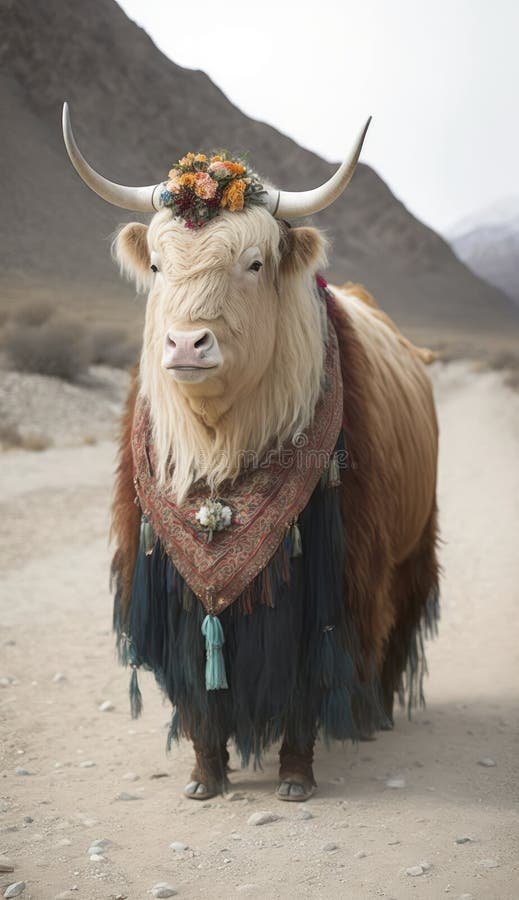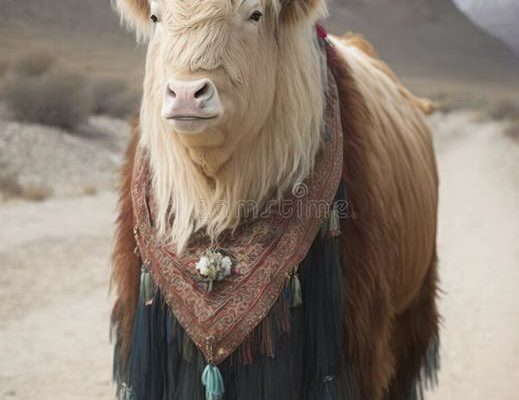
Just like in life, it’s easy to misinterpret the things we don’t see up close. Many of us might not have the chance to experience a yak’s daily life firsthand, leaving room for misunderstandings that can shape perceptions. Think of yaks as the quiet, introverted friends of the animal kingdom—sometimes misunderstood, but full of character when you take the time to learn more about them. So, let’s dive into some of the most common myths about yaks and uncover the truth behind these captivating creatures!
Myth 1: Yaks Are Just Big Cows
This is one of the most prevalent misconceptions about yaks. While they may look similar to cows because of their size and shaggy appearance, yaks are a completely different species. Cows belong to the Bos taurus group, while yaks are classified as Bos grunniens.
Here’s the thing: Yaks have adapted to high-altitude living in the Himalayas and Tibetan Plateau, which is something cows simply aren’t built for. Their lungs are larger, allowing them to take in more oxygen—essential for survival at elevations that can reach over 18,000 feet. Plus, yaks have a thicker coat to protect them against harsh weather conditions, enabling them to thrive in cold environments where cows might struggle.
If you ever find yourself contemplating the differences between yaks and cows, consider the environments they inhabit. Cows are more comfortable in lower altitudes and temperate climates, while yaks are true mountain dwellers, showcasing nature’s incredible ability to adapt.
Myth 2: Yaks Are Aggressive Creatures
Another common belief is that yaks are aggressive and dangerous animals. This misconception likely stems from their size and thick build, which can be intimidating. However, yaks are generally gentle creatures, especially the domesticated ones.
Let me explain: Yaks are herbivores that spend most of their time grazing peacefully on grasses, mosses, and other vegetation. When raised by humans, they often become accustomed to people and can even form strong bonds with their caretakers. They can display friendly behavior, much like dogs do.
Of course, like any animal, an upset yak can become defensive, especially if it feels threatened. But it’s essential to remember that, in most cases, yaks would rather flee than fight. Treating them with kindness and respect usually leads to a pleasant encounter.
Myth 3: Yaks Are Only Found in Tibet
Many people believe that yaks are exclusive to Tibet, but that’s not entirely accurate. While the Tibetan Plateau is indeed the heartland for wild yaks, these animals can also be found in several other areas of the world.
For instance, yaks are prevalent in countries like Nepal, Bhutan, India, and even Mongolia. In these regions, they have been domesticated and serve vital roles in agriculture and transportation. The traditional nomadic lifestyles that rely on yaks showcase their adaptability and importance beyond the borders of Tibet.
Additionally, some farmers in places like the United States have begun to raise yaks for their meat, milk, and wool. So, while Tibet might be a yak’s spiritual home, they are far more widespread than many realize.
Myth 4: Yaks Can Only Live in Extreme Cold
It’s easy to assume that yaks can only thrive in frigid conditions given their impressive fur coats. However, yaks are surprisingly adaptable creatures. While they do excel in cold environments, they can also adapt to warmer conditions, especially their domesticated counterparts.
You might be wondering why this is the case: The thick fur of yaks acts as insulation against the cold, but it also sheds in warmer weather, allowing them to stay comfortable. Farmers in warmer climates have found that yaks can thrive in temperatures that reach up to 70°F, provided they have access to shade and water.
This adaptability makes yaks a resilient breed, capable of supporting human needs across various environments. In fact, in regions where the climate fluctuates, yaks are often essential for livelihood and agriculture.
Myth 5: Yak Milk Isn’t Nutritional
You might have heard that the milk from yaks is less nutritious than cow’s milk, but that’s a misconception that deserves a closer look. In reality, yak milk is packed with nutrients, making it a staple for many communities in mountainous regions.
Here are some facts:
- Yak milk has a higher fat content than cow’s milk, often containing around 6-8% fat compared to cow’s 3-4%.
- It’s rich in vitamins and minerals, including calcium, which is essential for bone health.
- Many people who are lactose intolerant find yak milk easier to digest than cow’s milk.
So, if you’re considering switching things up in your diet, you might want to give yak milk a try! It’s often used to make cheese, butter, and yogurt, adding rich flavors and nutritional benefits to meals.
Myth 6: Yaks Are Obsolete in Modern Agriculture
Some folks might think that with the rise of machinery in farming, yaks have become outdated. But far from being obsolete, yaks remain vital to many agricultural systems, especially in challenging terrains. These sturdy animals are still used for plowing fields, carrying heavy loads, and even providing milk and meat.
Here’s the thing: Many farmers appreciate yaks not only for their strength but also for their ability to graze on tough terrain where tractors can’t go. Their natural grazing habits help maintain the ecosystem, promoting biodiversity in pastures.
Additionally, with a growing interest in sustainable farming practices, yaks are gaining recognition. Their manure is an excellent natural fertilizer, reducing reliance on chemical options. So, rather than fading into history, yaks are likely to play an increasingly important role in future agriculture.
Understanding yaks might seem like peeling back the layers of an onion—there’s more beneath the surface than you might expect. These incredible animals have been unfairly boxed in by myths and misconceptions that don’t do them justice.
From their gentle nature to their adaptability in various climates, yaks are truly remarkable. Their importance to the cultures and ecosystems of high-altitude regions is immeasurable. If you ever get the chance, take a moment to learn more about these fascinating creatures. If nothing else, you’ll walk away with a deeper appreciation for their role in our world—and that furry, fluffy exterior? It’s just the icing on the cake!

